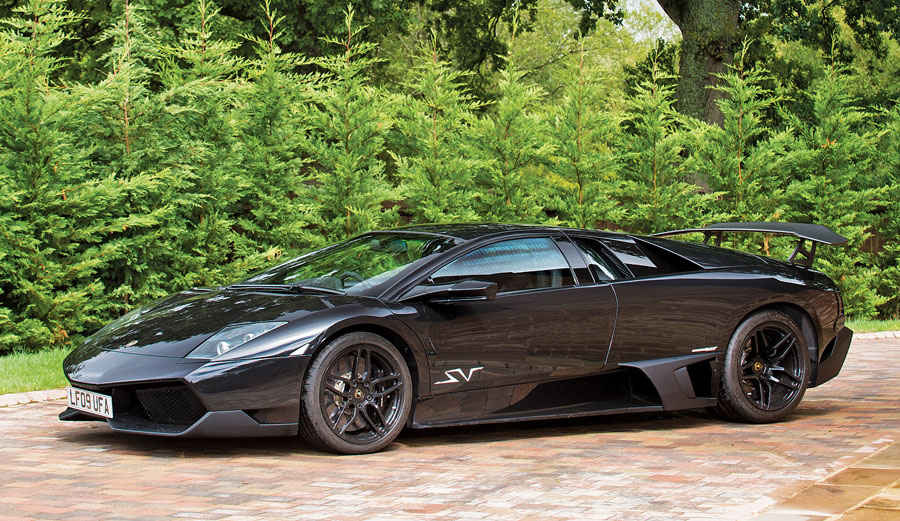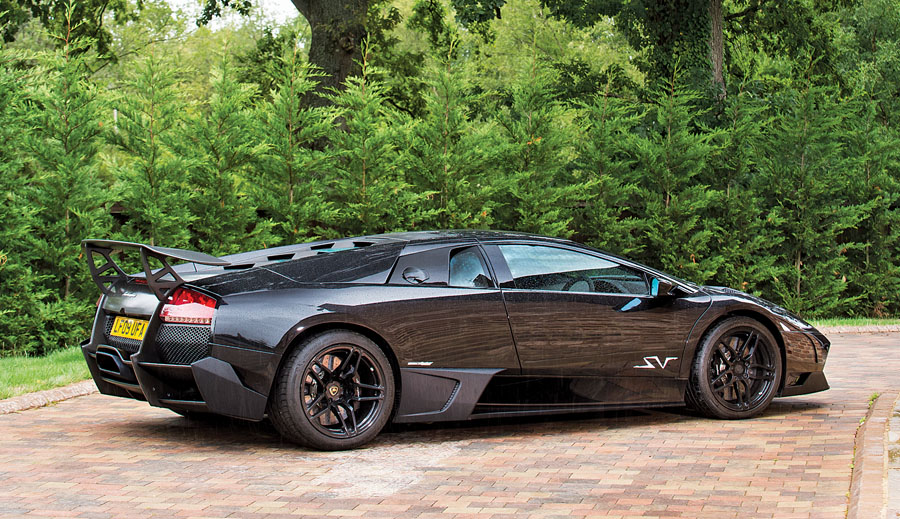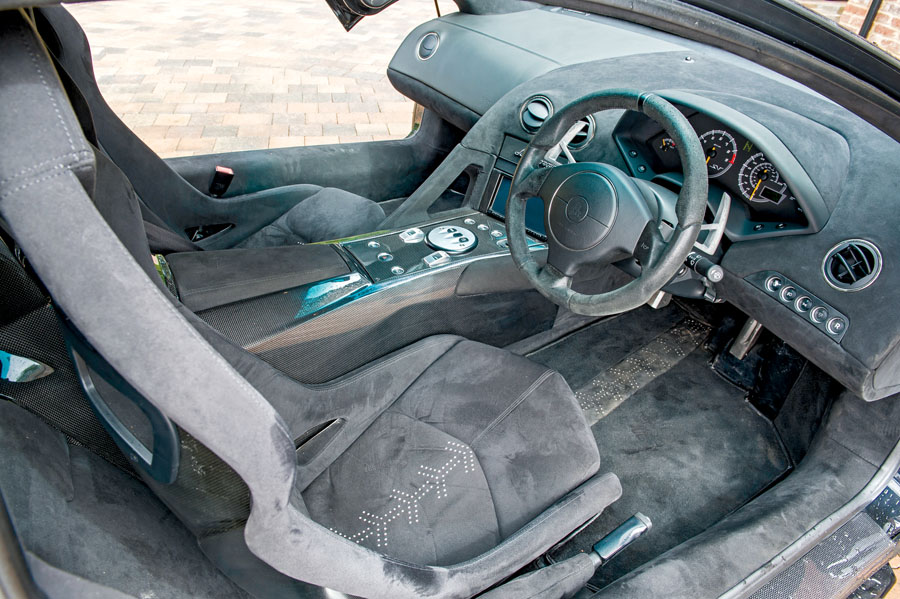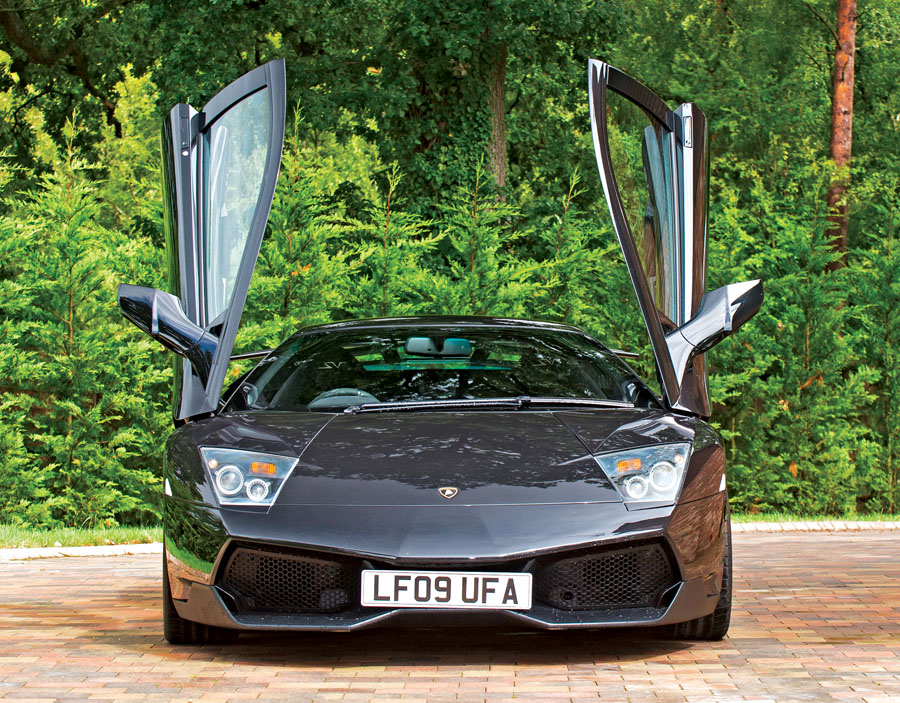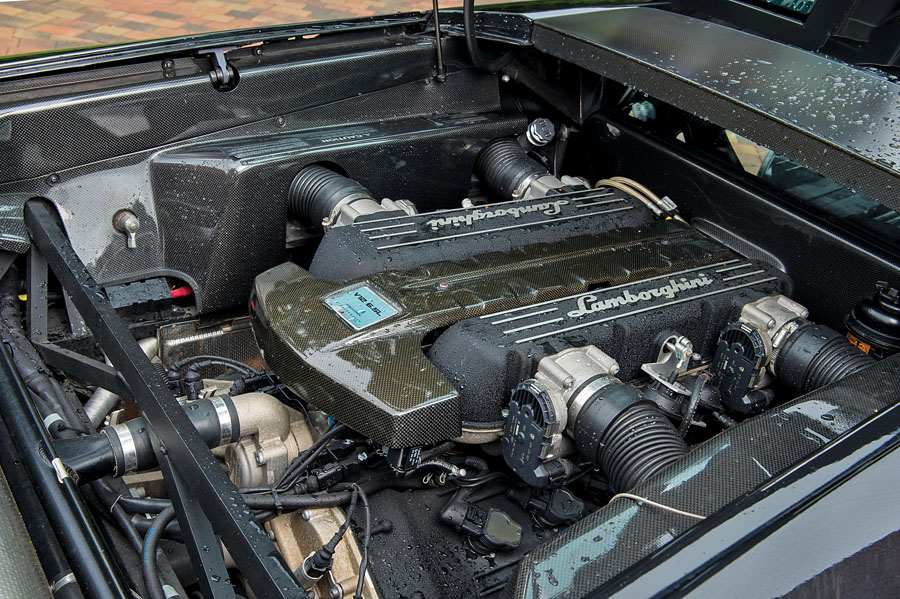- One of only 185 made (out of a planned 350)
- Imported from Singapore
- “e-Gear” semi-automatic sequential transmission
- Circa 6,525 miles from new
- Freshly serviced by H.R. Owen
SCM Analysis
Detailing
| Vehicle: | 2009 Lamborghini Murciélago LP670-4 SuperVeloce Coupe |
| Years Produced: | 2009–10 (LP670-4 SV) |
| Number Produced: | 186 |
| Original List Price: | $450,000 |
| SCM Valuation: | $261,833 |
| Chassis Number Location: | Top left side dashboard, plate in engine compartment |
| Engine Number Location: | Between the cylinder heads |
| Club Info: | Lamborghini Club America |
| Website: | http://www.lamborghiniclubamerica.com |
| Alternatives: | 2004–14 Lamborghini Gallardo, 2004–09 Ferrari F430, 1999–2005 Porsche GT3 |
| Investment Grade: | D |
This car, Lot 267, sold for $261,833, including buyer’s premium, at Bonhams’ Goodwood Revival auction in Chichester, U.K., on September 8, 2018.
There’s no doubt that any modern Lamborghini will become collectible, but the collector community is still sorting out exactly how desirable the 21st century Lambos are going to be. Right now, there are plenty of cars coming to market, but comparatively few are changing hands at auction. This Murciélago is one of the exceptions.
Enter Murciélago
The Murciélago succeeded the Diablo as the top of the line from Sant’Agata Bolognese in 2001. It was named for a fighting bull that managed to survive 24 sword strokes in a bullfight in 1879, and in so doing, was spared from death by the bullfighter.
The V12-powered Murciélago was produced from 2001 to 2010, concurrently from 2003 with the V10-powered Gallardo. According to Lamborghini, 4,099 Murciélagos were constructed — which at the time made it the most-produced Lamborghini ever.
All Murciélagos are mid-engine with all-wheel drive. In typical Lamborghini fashion, the engine is oriented longitudinally and placed immediately aft of the passenger’s compartment, with the 6-speed manual gearbox occupying the tunnel between the driver’s and passenger’s seats. A differential extends rearward from the engine to send 70% of the power to the rear wheels, while a viscous-coupled center differential sends 30% to the front wheels.
From 2001 to ’06, the Murciélago engine was a 6.2-liter DOHC V12 rated at 572 horsepower and 479 foot-pounds of torque. The early Murciélagos claimed a 0–60 time of about 3.8 seconds. Top speed was advertised as 205 mph.
In 2006, Lamborghini brought out a refreshed Murciélago LP640 coupe and roadster, referencing the new car’s 640 PS (631 horsepower) 6.5-liter V12 engine. The new Murciélago also featured an optional “e-Gear” automated sequential-shift gearbox with paddle shifters. Optional carbon-ceramic brakes also debuted with the LP640.
At the end of the development cycle, the LP670-4 SuperVeloce model appeared for the 2009 and 2010 model years. Extensive use of carbon fiber in the SV cut the curb weight by over 200 pounds, and Lamborghini boosted the power output of the 6.5-liter engine to 670 PS (661 horsepower). This version of the Murciélago will hit 60 mph in just 3.1 seconds, and make about 210 mph at the top end. Lamborghini built 186 of these cars. Carbon-ceramic brakes were included on the SV as standard equipment, and almost all were fitted with the e-Gear transmission.
Fitting in the market
The Murciélago was the first car to be produced after Audi took over corporate ownership of Lamborghini in 1998 and tightened the reins on design and quality. Audi’s Luc Donckerwolke penned the Murciélago, and went on to establish the Lamborghini Centro Stile design studio for subsequent models.
The V10-powered Gallardo joined the Murciélago in 2003 as a more entry-level exotic. To compare the two, the 2004 Murciélago carried a sticker price of $279,900, while the Gallardo could be purchased for $165,900. By the end of production in 2014, the Gallardo would sell 14,022 units — by far Lamborghini’s best seller to date.
The Murciélago might have been more successful if its final years of production had not coincided with the worst economic recession in decades. Lamborghini originally intended to build 350 units of the final LP670-4 SuperVeloce, but in the end could sell only 186. The price gap with the Gallardo had widened over the years, and by 2010, the top Murciélago cost $450,000, compared to the top Gallardo available at $221,000.
A rare sale
The subject sale is unusual for a several reasons. First, there aren’t many SV Murciélagos, so they don’t come up very often.
With only 6,525 miles on the clock, this Murciélago appears to be in as-new condition and is up to date on its service. This car is a right-hand-drive model, and that just makes it even more rare.
The sale price of $264,280 is notable, since this car cost $450,000 just nine years ago.
In comparison, a 2018 Aventador S coupe with 729 horsepower carries a price tag of $417,650, so prices on the new cars have dropped. A buyer could also select a new 2018 Huracán with 630 horsepower for $274,390, which is awfully close to the purchase price of this Murciélago. A new Huracán will outperform the Murciélago, hitting 60 mph in just 2.3 seconds.
Scanning the SCM Platinum Auction Database, one thing jumps right out: the number of failed sales for Lamborghinis this year. Throughout 2018, there are seven no-sale records for Murciélagos in the database, and no successful sales before this one. Bids have ranged as high as $340,000 for a 2008 LP640 roadster (SCM# 6858854) and $281,376 for a 2010 LP670-4 SV coupe (SCM# 6876988).
There were four successful Murciélago sales in 2017, and only one failed to sell, all on substantially similar bids. The situation is only a little better for Gallardos, with five sales and 13 no-sales recorded in 2018.
Notably, this subject sale is a low-water mark for the Murciélago LP670-4 SV, with the most recent successful sale in 2017 at $313,551 (SCM# 6827834) and a no-sale in 2016 on a bid of $402,000 (SCM# 6809434).
Not yet classic
Going by the numbers, it looks as though Lamborghini sellers are looking for more money than buyers are willing to pay. Perhaps the sellers have gotten big-eyed over the recent $965,908 sale (SCM# 6869878) of the pope’s custom-built Huracán?
In any case, the Murciélago seems to be sitting in a twilight period between its era as the latest hotness and its place as a classic Lamborghini. Its looks aren’t dated, but they aren’t fresh anymore, either. Still, as the most-produced Lamborghini of its time, this car is an icon — it’s just not appreciated as such today.
With the price and performance of new Lamborghinis undercutting the older cars, the market has yet to render a final verdict. But if its namesake is any indication, the bull that would not die may have more life left in it yet. ♦
(Introductory description courtesy of Bonhams.)
